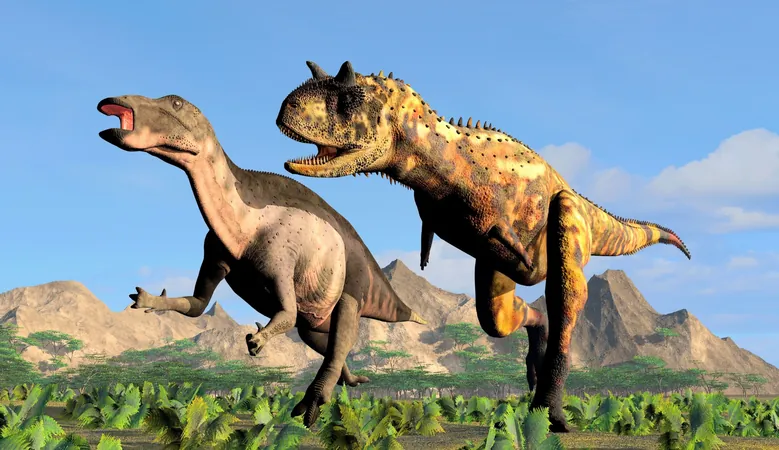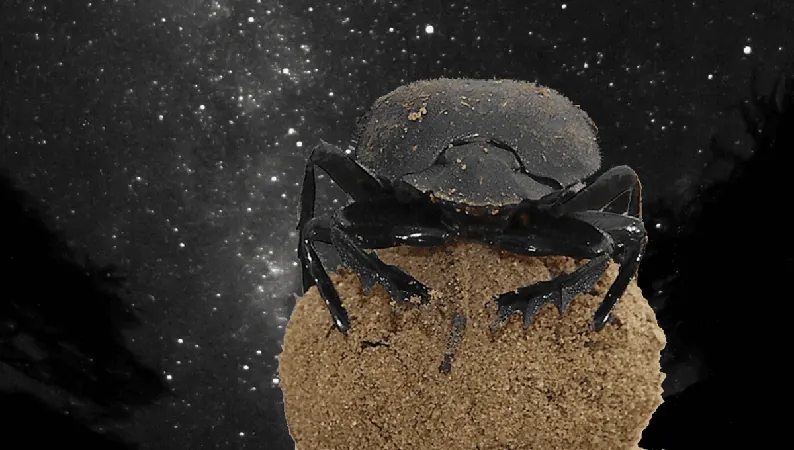
Unveiling the Diets of Dinosaurs: How They Coexisted Harmoniously
2025-07-25
Author: Wei
Unlocking the Secrets of Jurassic Diets
The feeding habits of dinosaurs have long intrigued scientists, and now, groundbreaking research is revealing the intricate details of their diets through fossilized teeth. By examining chemical traces found in tooth enamel, researchers from The University of Texas at Austin have uncovered fascinating insights into the distinct eating preferences among Late Jurassic dinosaurs.
A Unique Ecosystem Where Dinosaurs Flourished
This pivotal study highlights that different dinosaur species didn’t merely coexist—they thrived by adopting specialized diets that minimized competition for food. The analysis of calcium isotopes embedded in their enamel retained records from their ancient meals, allowing scientists to trace specific dietary habits back to various types of plants, including distinct parts such as bark or buds.
Liam Norris, the study's lead author and a recent PhD graduate from UT’s Jackson School of Geosciences, stated, “We now have concrete evidence showing they were all eating different things.”
Exploring Fossils at Carnegie Quarry
Norris conducted his research at Carnegie Quarry in northeast Utah, a treasure trove of dinosaur remains preserved rapidly during a period of severe drought. This exceptional site provided the ideal backdrop for studying diets among herbivorous giants such as Camarasaurus, Camptosaurus, and Diplodocus, alongside carnivores like Allosaurus and the crocodile-like Eutretauranosuchus.
Diverse Diets Among Herbivores
Previously, it was believed that large herbivores dined on plants located at different heights in the forest canopy. However, Norris’s findings challenge this notion, revealing a more sophisticated diet differentiation. For instance, Camptosaurus preferred tender leaves and buds, while Camarasaurus favored tougher conifers. Meanwhile, Diplodocus enjoyed a varied spread that included low-lying ferns and horsetails.
Norris pointed out, “This differentiation aligns with their physical characteristics—different heights and snout shapes reinforce the idea that they could efficiently target specific vegetation.” This adaptability allowed them to exist alongside one another without directly competing.
Carnivorous Diet Competitions—and Coexistence
In the realm of carnivores, Allosaurus and Eutretauranosuchus presented overlapping dietary isotopes, yet subtle distinctions hinted at their unique prey choices. Allosaurus, a formidable predator, likely hunted local herbivores, utilizing its towering stature and powerful jaws. Conversely, the more diminutive Eutretauranosuchus seems to have preferred fish or smaller terrestrial animals, suggesting it thrived in riverine or wetland environments.
The stark differences in hunting strategies underscore how these carnivores could coexist without fierce competition despite sharing the same habitat.
A Thriving Ancient Ecosystem
The study illuminates the richness of an ecosystem that once supported a variety of colossal creatures. These specialized diets point to a flourishing landscape filled with diverse plant life, where resources were efficiently utilized, minimizing rivalry.
Norris encapsulated this revelation: “It’s further proof that this ecosystem was as spectacular as we imagined.”
A Method for Understanding Ancient Life
Published in the journal *Palaeogeography, Palaeoclimatology, Palaeoecology*, this research not only sheds light on the lives and diets of dinosaurs but also establishes a groundbreaking approach for exploring other prehistoric ecosystems using geochemical analysis.




 Brasil (PT)
Brasil (PT)
 Canada (EN)
Canada (EN)
 Chile (ES)
Chile (ES)
 Česko (CS)
Česko (CS)
 대한민국 (KO)
대한민국 (KO)
 España (ES)
España (ES)
 France (FR)
France (FR)
 Hong Kong (EN)
Hong Kong (EN)
 Italia (IT)
Italia (IT)
 日本 (JA)
日本 (JA)
 Magyarország (HU)
Magyarország (HU)
 Norge (NO)
Norge (NO)
 Polska (PL)
Polska (PL)
 Schweiz (DE)
Schweiz (DE)
 Singapore (EN)
Singapore (EN)
 Sverige (SV)
Sverige (SV)
 Suomi (FI)
Suomi (FI)
 Türkiye (TR)
Türkiye (TR)
 الإمارات العربية المتحدة (AR)
الإمارات العربية المتحدة (AR)